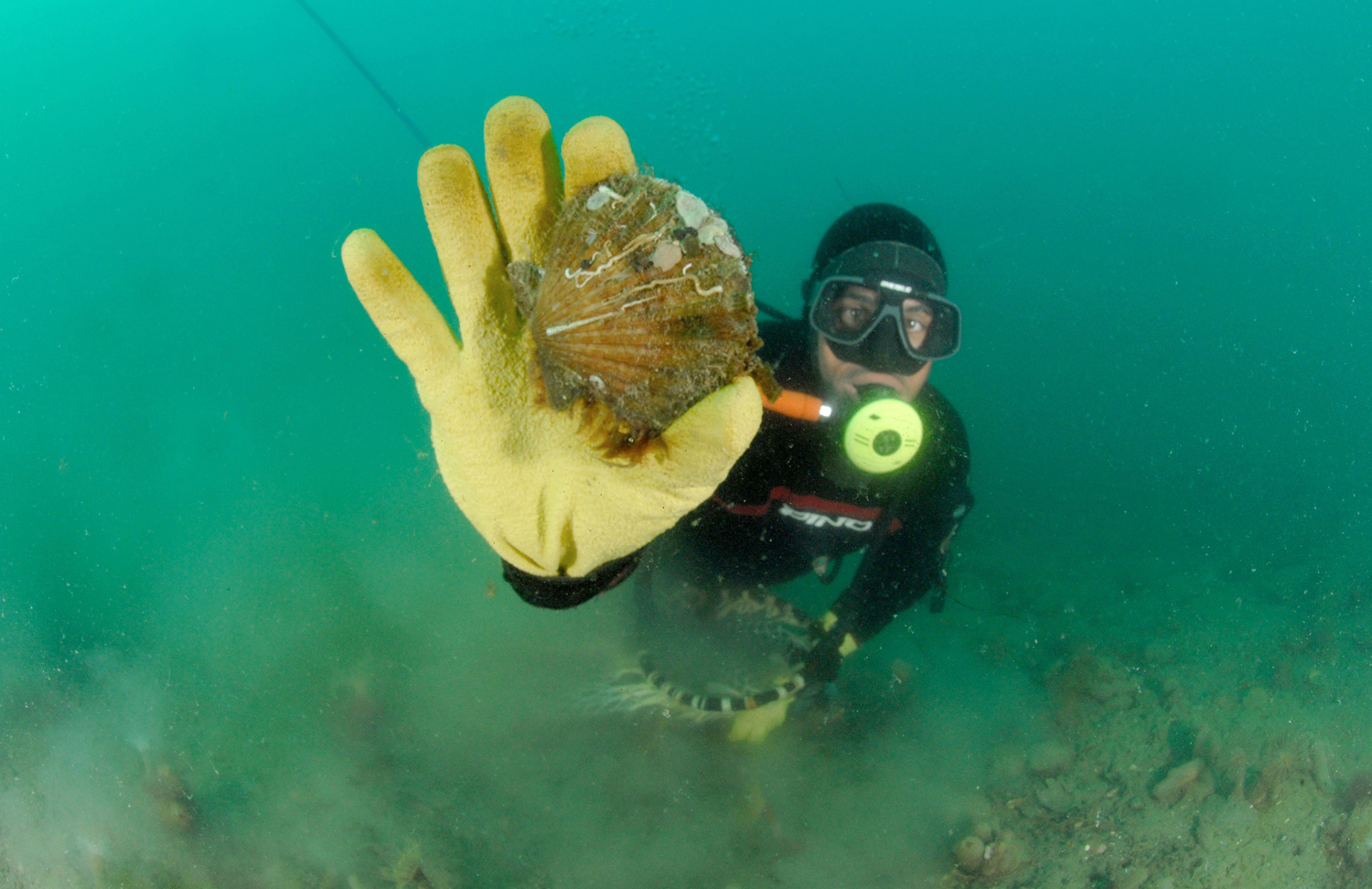
San José Gulf – Atlantic Ocean
Captain Dario Diaz
His family is integrated by his son of 18 years old. He work with his father, a famous old fisherman well known in town. Dario works with his father, who is a well-known fisherman in his town.
Dario knows the depths of the sea from the age of 5. Among recreational diving, commercial and professional has developed his vast knowledge of the sea. Today, then, is a renowned spearfishing hunter with several medals won throughout Latin America.
Dario’s first contact with the depths of the sea was at the age of five. Since then he has worked as a diving instructor, an underwater photographer and a professional diver. Nowadays he is a renowned spear-fishing hunter with several medals won throughout Latin America.
The type of fishing he does is called ‘Artisan fishery’. Made from a vessel of 8,50 meters in length, 2,40 beam and 1,20 draught. Made of fiberglass, with a 200Hp outboard engine. These fishermen are called ‘buzos marisqueros’ or ‘shellfish divers’. From seabed they collect several types of shellfish , such as scallops, mussels and other species that are found up to 27 meters deep.
His team is made up of a sailor, the captain and another diver. His father often accompanies him as captain while Dario dives to collect shellfish.
The boat has two hoses just over 100 meters each, called ‘Narguile’ or “Hookah” connected to a small compressor installed aft, which provides air during dives. This compressor does not always work continuously, resulting in problems for divers to stay in deep.
The working day usually begins before dawn, loading up equipment, fuel containers and picking up the daily crew..
After a two-hour drive among gravel roads; they reach their destination, Playa Larralde, in the Gulf of San José; a fishermen’s beach, where the boat is.
They then load the plastic containers that will be filled with cargo of scallops. A very important implement, the dip nets, circular nets that a diver uses underwater to collect shellfish. They are commonly called ‘Salabardos’, they have a very peculiar shape with wide rigid mouth on one end, to facilitate the task of uploading the catch under the water. And a loose net on the bottom for optimal charge of many kilos in each sack replacement.
Last check takes place before leaving to sea. This output lasts for hours, always depending on the schedules of tidal currents, weather conditions and wind direction.
Water temperature can reach 8 * degrees in winter. Differences in tidal range up to 8 meters. The optimum time to enter the sea is at low tide; optimizing over bottom times and as a result, the day’s catch.
Those are decisions that the captain must make each day.
The boat is pulled by a small tractor to the coastline. Depending on the site chosen(sea), it may take about an hour to get there.
After a full day at sea, the boat returns to the mainland, overloaded with the day’s catch.
Sailors, divers and captain return home to rest and prepare for the next day of fishing.
Dario has been fishing mussels for twenty years. According to his experience it is difficult to see changes in growth and development in mussels since their cycles are random. There have been good and bad years and he does not believe that there are ties to pollution and/or contamination.
Nowadays the overpopulation of Undaria, an algae species that has grown in the area in an unnatural way. This algae colonizes on vast areas so as to absorb more sunlight, and can reach up to 17mts deep. Therefore mussels choose deeper areas to grow where they can have more oxygen and be free of algae. Due to this their growth is affected. Mussels have been found up to 72mts. Deep.
This is how Dario remembers his days out at sea ,a very special event comes to mind. And he remembers this as the most special moment under the sea….
He was collecting mussels when suddenly he saw a shadow at about 1 meter from where he was. It was a Southern Right Whale hovering over him, curious of what he was doing. They starred at each other for a bit and then both Dario and the whale carried on with their own business. The whale stayed there for a while as if it was accompanying him in his taks. He felt safe and protected and knew the whale would not harm him. Once again he felt he was part of the sea just as she was.


